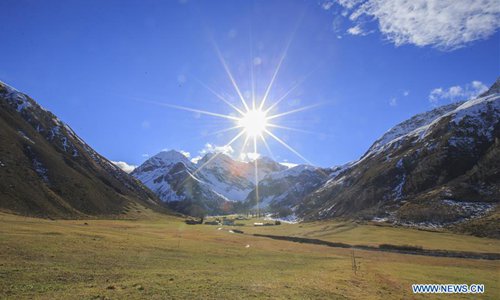
Photo taken on Nov. 12, 2018 shows the late autumn scenery of Davos, Switzerland. Located on the Landwasser River in the Swiss Alps, Davos is the highest town in Alps mountain areas. Davos is famous for its host to the annual World Economic Forum. (Xinhua/Xu Jinquan)
Italian rescuers were to resume the search for survivors on Monday after an avalanche set off by the collapse of the largest glacier in the Italian Alps killed at least six people and injured eight others.Authorities said they did not know "the total number of climbers" hit when the glacier collapsed Sunday on Marmolada, the highest mountain in the Italian Dolomites.
The disaster struck one day after a record-high temperature of 10 C was recorded at the glacier's summit.
"An avalanche of snow, ice and rock hit an access path at a time when there were several roped parties, some of whom were swept away," emergency services spokeswoman Michela Canova told AFP.
Six people had been confirmed dead and eight were injured, she added while "the total number of climbers involved is not yet known."
Two of the injured were taken to hospital in Belluno, another in a more serious condition was taken to Treviso and five to Trento.
She did not specify the nationalities of the victims, but Italian media reported that foreign nationals were among them.
The Alpine rescue corps has activated a toll-free number for people to report friends or relatives who had not returned from an excursion to the glacier.
Several helicopters were scrambled to take part in the initial rescue operation but the search for survivors had to be suspended at nightfall and would resume early Monday.
Rescuers in the nearby Veneto region of northeast Italy said they had deployed all their Alpine teams, including sniffer dogs.
Italian Prime Minister Mario Draghi expressed his "sincerest condolences" to the victims and their families on Twitter.
Massimo Frezzotti, a science professor at Roma Tre University, told AFP the collapse was caused by unusually warm weather linked to global warming, with precipitation down 40-50 percent during a dry winter.
AFP



